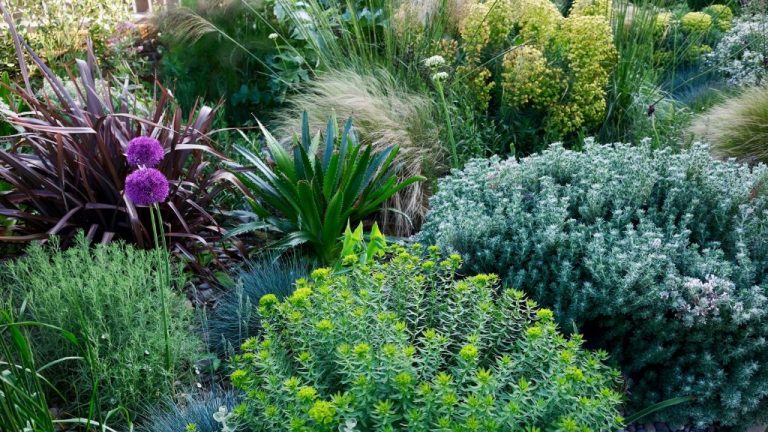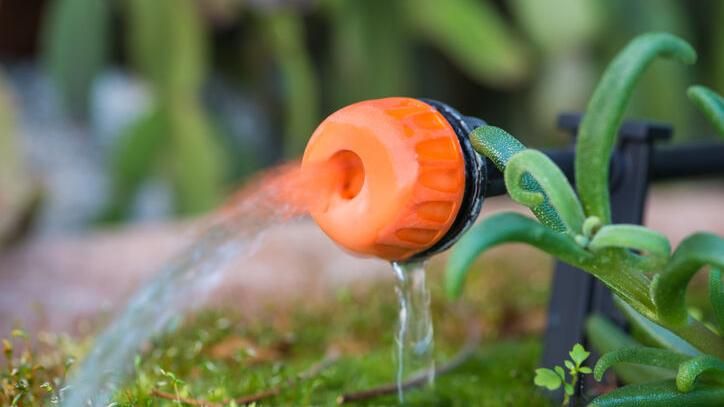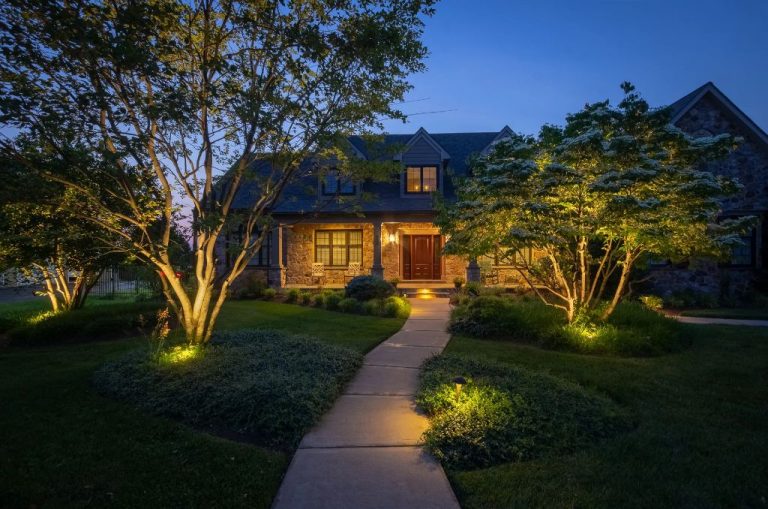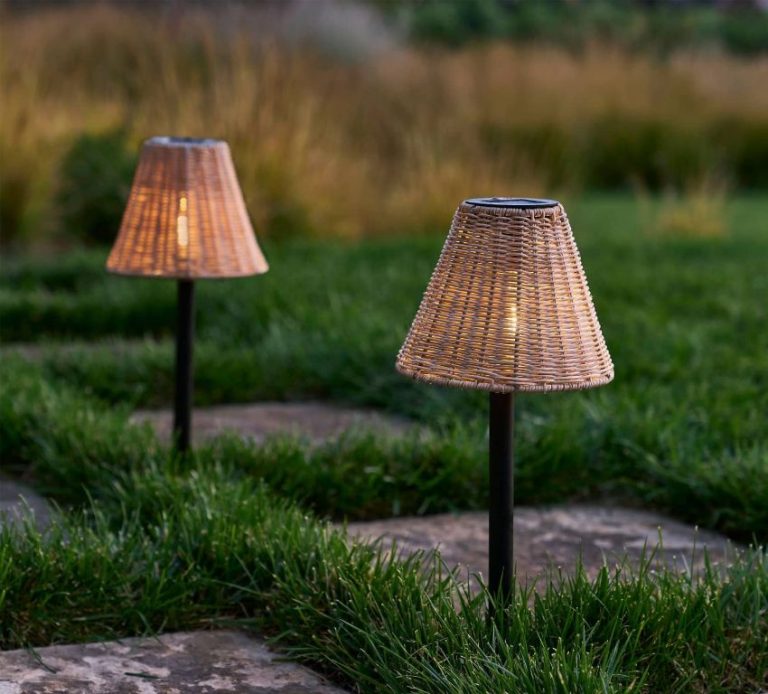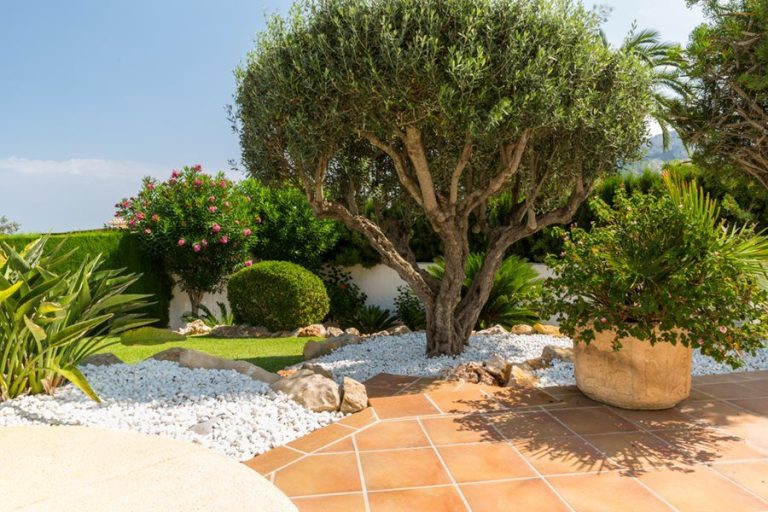Seaside Retreat: Coastal Landscape Designs For A Relaxing Atmosphere
Coastal landscape design creates an outdoor environment suited to seaside living. With careful plant selection and hardscaping, you can craft a coastal landscape that withstands salt, wind, and sand while providing a relaxing atmosphere. The key benefits of coastal landscaping include:
Wind and salt tolerance – Coastal plants are adapted to these harsh conditions. Using natives or non-native plants bred for coastal regions ensures your landscape thrives.
Low maintenance – Many coastal plants don’t require much water or pruning once established. Hardscaping with stone, concrete, or composite decking also reduces maintenance.
Relaxation – Coastal gardens promote relaxation with views of the sea, soothing water features, and places to unwind like hammocks, swings, and loungers.
Durability – Materials like stone, composite decking, outdoor textiles and marine-grade woods withstand the elements in a seaside setting.
Nautical theme – Incorporating driftwood, seashells, rope, buoys and other marine relics brings the feel of the sea into your landscape.
Coastal landscape design results in an outdoor space you and your guests will enjoy while requiring less maintenance than a typical landscape. This guide covers the essential elements for creating your own seaside oasis.
Choose Plants Suited to the Coastal Climate
When designing a seaside garden, it’s important to select plants that can withstand the harsh coastal conditions. The three main factors to consider are salt tolerance, wind resistance, and drought tolerance.
Salt spray from the ocean can damage and kill plants not adapted to it. Some salt-tolerant plants that thrive in coastal gardens include lavender, gaillardia, sea oats, yarrow, and daylily (https://www.bhg.com/gardening/flowers/perennials/best-plants-for-seaside-gardens/).
The strong winds common to oceanfront properties can also wreak havoc. Look for sturdy plants with flexible stems and leaves that resist breaking. Ornamental grasses like pampas grass and sedges stand up well. Sea lavender (Limonium), New Zealand flax (Phormium), and Aeonium arboreum are other wind-tough options.
Coastal areas often have sandy, fast-draining soils. Drought-resistant plants suited for sandy or gravelly soil include agave, yucca, sedum, thymes, and hebes (https://www.homesandgardens.com/gardens/coastal-plants). Grouping plants with similar water needs also helps conserve moisture.
By selecting hardy, resilient plants, you can create a seaside garden that withstands the coastal conditions and thrives.
Select Materials that Withstand the Elements
When designing outdoor spaces in coastal areas, it’s important to choose durable materials that can withstand sun, wind, salt spray, and moisture. Natural stone and weather-resistant woods are ideal choices.

Natural stone like granite, limestone, and sandstone is an excellent material for coastal landscaping. According to CoastalOne, natural stone has a timeless aesthetic and is unaffected by sun, rain, or saltwater. Use stone for walkways, patios, walls, and other hardscaping elements. Opt for a textured stone surface to prevent slipping.
For decking, fencing, pergolas and other structures, select woods that are naturally resistant to rot and insect damage. Coastal Building Supply recommends tropical hardwoods like ipe, garapa, and batu. These dense woods contain oils that act as natural preservatives. Look for sustainably harvested exotic woods certified by the Forest Stewardship Council.
Hardware and fasteners should also withstand the coastal climate. Coastal Forest Products suggests using marine-grade stainless steel screws and hardware for optimal longevity in salty, humid conditions.
Incorporate Water Features
Water features like ponds, fountains, and rain chains add tranquility and auditory interest to coastal landscapes. The soothing sounds of moving water create a relaxing atmosphere. Ponds invite wildlife like frogs and dragonflies to take up residence. Fountains come in all shapes and sizes, from dramatic tiered fountains to simple bubblers.
When incorporating ponds and fountains, use materials like stone, concrete, or copper that can withstand the harsh coastal elements. Opt for salty and drought-resistant plants like grasses, succulents, and palms around the pond edges. Include a recirculating pump to keep water moving and help deter mosquito breeding.
Rain chains make artistic replacements for standard downspouts. These chains of interconnected cups or links guide rainwater in a cascading display. Choose durable metals like copper, aluminum, or stainless steel. Position rain chains where the water can empty safely away from high traffic areas.
For inspiration, browse photos at Houzz and definitions at Wildearthlab.
Use Curving Pathways
A great way to create a coastal landscape design is to incorporate curving pathways rather than straight lines. The gentle curves evoke the meandering flow of waves and give a natural, organic feel. According to carolwinnerartist.com, “Curved paths are more inviting than straight lines and complement the curves of the shoreline and dunes.”
Gravel or crushed stone paths that curve through garden beds or lawns help guide visitors through the landscape. The gravel crunches underfoot, enhancing the sensory experience. Curved pathways can lead guests to focal points like outdoor living spaces, fire pits, or views of the water. Just be sure the width accommodates the traffic flow you anticipate.
When laying out the path, pinterest.com recommends avoiding tight angles and sharp 90 degree turns. Gentle sweeping curves that meander through the landscape have a more naturalistic look and feel. You can also use curved borders for planting beds and lawns. The curves break up the hard lines and edges, softening the design.
Create Seating Areas with Coastal Views
Coastal living rooms benefit greatly from designated seating areas that allow you to fully enjoy the waterfront views. When designing seating for your coastal retreat, incorporate furniture like benches, hanging chairs, and hammocks that evoke a laidback seaside vibe.
Long wooden benches are a classic coastal choice. Position benches facing large windows with waterfront views. Add thick cushions to maximize comfort. Benches work well in entryways or next to large windows. Opt for a weather-resistant teak or synthetic material that won’t rot or mildew in the seaside humidity (Source).
Hanging chairs are a fun and space-saving option for small coastal living rooms. Suspend a chair next to a window or on the patio to gently sway in the sea breeze. For indoor use, choose cushy cotton rope or woven wicker chairs. Outdoors, all-weather synthetic rattan works best (Source).
Hammocks are the quintessential relaxation spot. Hang a hammock indoors or out to lounge and enjoy the salty breezes and ocean sounds. For longevity, select a hammock made from weather-resistant polyester fabric with a sturdy steel stand.
Include a Fire Feature
A fire feature is an essential element for creating a relaxing coastal landscape. The warmth and ambiance of a fire pit, chiminea, or outdoor fireplace will make any seaside space feel welcoming. Opt for a gas fire pit constructed from weather-resistant materials like concrete, stone, or metal that can withstand the salty sea air. Circular fire pits work well for gathering around, while a rectangular or linear shape can be built against a wall. Select natural stones in cool tones like granite or limestone that complement the coastal setting. Incorporate a chiminea for a compact fire feature that also provides warmth. Choose a chiminea made from terracotta or concrete that holds up over time. Integrate an outdoor brick fireplace or fire bowl into seating areas to add ambient light and a cozy feel. Use fire glass or lava rock instead of wood which requires frequent cleaning from airborne sand or salt spray. Position the fire feature where it can be enjoyed from patios, decks, or overlooks with water views for the ultimate seaside experience.
Use Weather-Resistant Furniture
When designing an outdoor space in a coastal environment, it’s crucial to choose furniture that can withstand sun, wind, salt spray, and moisture. Opt for weather-resistant materials like wicker, teak wood, and aluminum that are made to endure the elements.
Wicker is a popular choice for coastal decor. Wicker is actually a style of weaving, not a material itself. Natural wicker is woven from plant materials like rattan, while synthetic wicker is made from vinyl or resin. Both natural and synthetic wicker resist mold, mildew, and moisture damage. Look for all-weather wicker furniture with an aluminum frame for maximum durability.
Teak wood is another excellent option for coastal climates. Teak contains natural oils that help it stand up to sun, rain, and saltwater. Look for teak furniture made from sustainably-harvested teak that has been kiln-dried for added stability. Teak requires little maintenance beyond occasional cleaning. It will develop a silvery patina over time that adds to its beauty.
Powder-coated aluminum is corrosion-resistant, lightweight, and strong. Aluminum patio furniture won’t warp, crack, or splinter like wood furniture can. Look for powder-coated aluminum in a coastal-inspired style. Avoid hollow aluminum tubing which can collect water inside and corrode over time.
Choosing the right materials is key to creating an outdoor oasis that can truly withstand the coastal environment. Wicker, teak, and aluminum furniture will stay looking beautiful despite sun, wind, rain, and salt spray.
Incorporate Nautical Decor
A seaside landscape calls for nautical-themed decor to complete the coastal ambiance. Decorating with items like anchors, ropes, shells, and fishing nets ties the whole space together and creates a relaxing, beachy feel. Here are some ideas for incorporating nautical decor into your seaside retreat:
Use weathered, antique-looking anchors as decorative accents. Place a large anchor on the lawn or use smaller anchors to border garden beds. You can also hang anchors on walls or fences. Painted a solid color like white, blue, or yellow, anchors will really stand out.
Coil ropes and hang them on porches or accent walls. Old fishing nets also make for great wall hangings. For a striking look, drape netting above an outdoor dining space.
Decorate walkways and patios with seashells. Outline the edges with small shells or fill containers with large shells and coral pieces. You can also use clam shells as pretty serving dishes.
Make a DIY rope plant hanger for plants like ferns and ivy to give your landscaping a nautical vibe. Macramé plant hangers are also fitting for a seaside retreat.
Look for outdoor décor and furniture with rope or wood details to complement the nautical theme. Adirondack chairs painted a deep blue makes a nice accent.
Use touches of navy, white, wood tones, and other colors reminiscent of the sea and sand to tie everything together. Paint an outdoor side table navy blue or get white slipcovered cushions for wicker lounge chairs.
Lean into the nautical theme with decorations like buoys, starfish anchors, and sailor statues. A statue of a lighthouse or mermaid makes a charming focal point.
With the right assortment of nautical accents like anchors, ropes, shells and nets, you can easily achieve the relaxing seaside atmosphere you want for your coastal retreat.
Design for Low Maintenance
Coastal landscapes are exposed to harsh sun, wind, and salt spray, so it’s important to choose plants and materials that can withstand these conditions with minimal maintenance. Some strategies for low maintenance coastal landscaping include:
Focus on hardy, salt-tolerant plants like beach grasses, sea oats, junipers, oleander, and succulents. Choose native varieties that are adapted to coast conditions. Avoid high maintenance plants like tropicals or annuals that will require frequent watering and pruning (Tilly Design).
Install a smart drip irrigation system with moisture sensors. This will water plants efficiently without overwatering. Group plants with similar water needs together on the same irrigation zones (The Coastal Oak).
Use permeable materials like gravel, crushed shells, or permeable pavers for pathways. These allow rainwater to drain through rather than pooling on hard surfaces. Limit high maintenance lawns and steer clear of mulch, which can blow away in coastal winds.
Incorporate low maintenance design features like weather-resistant outdoor furniture and decorative objects that don’t require painting or staining. Keep up with basic pruning, weeding, and debris removal, but avoid intensive plantings that need excessive trimming.
With careful plant selection and some smart design choices, you can create a coastal oasis that maintains its beauty with minimal upkeep.

